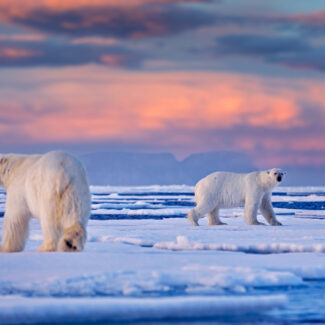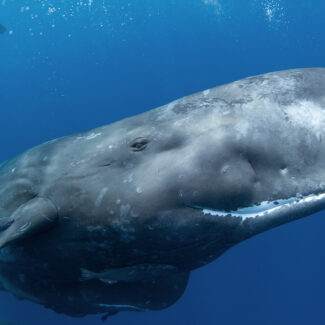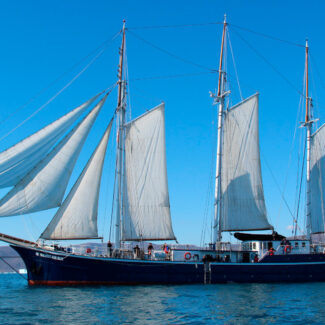Antarctica Food: What To Eat On The White Continent
Sure, food isn’t necessarily top-of-mind when envisioning your Antarctica getaway, given the once-in-a-lifetime scenery and wildlife you’re anticipating. And maybe if you do spare a thought as to your diet on an Antarctic expedition, you might be envisioning something rather on the lean or dull side of things. But is this accurate?
Given the White Continent lacks an indigenous human population—indeed, lacks a permanent human population of any kind—you won’t find any traditional food in Antarctica: no “national dishes” or “regional specialties,” per se.
Foodies, though, needn’t lament: As it happens, Antarctica food these days tends to be mighty delicious—and surprisingly gourmet—indeed! You can most certainly expect to eat well on your cruise or flight package: a real icing-on-the-cake, if you will, of a bucket-list experience ranking among the most extraordinary journeys one can take.
Time to tuck into a rather underappreciated angle of Antarctic tourism: the gustatory side of things! But first—a bit of time travel, to set things in context.
This might not look like a gourmet meal, but for early Antarctic explorers, pemmican was a lifesaver! This energy-rich concoction of dried meat and fat provided vital sustenance in the harsh, unforgiving environment, fueling their incredible journeys across the White Continent.
What Early Explorers Subsisted On
The fare that Antarctica’s pioneering explorers subsisted on might surprise you on a few levels. Either way, this section is for historical interest only: Needless to say, it’s not an indication of what you’ll be dining upon on your voyage to the White Continent.
Cuisine on those early-20th-century expeditions could definitely edge on the rather opulent side of things. As Ella Morton wrote in a Slate/Atlas Obscura article about Shackleton’s 1907-1909 Nimrod Expedition: “Among the edible items, intended to sustain 15 men for up to two years, were 1,600 pounds of ‘finest York hams,’ 1,260 pounds of sardines, 1,470 pounds of tinned bacon, and 25 cases of whisky. The 408 pounds of ox tongues were supplemented with another 384 pounds of sheep tongues and 144 pounds of pork tongues, presumably for the sake of variety.” Besides the whisky, that meaty fodder also came lubricated (shall we say) by six cases each of brandy and champagne and three cases of port.
On the 1910-1913 Robert Falcon Scott Terra Nova expedition, meanwhile, feasts at Cape Evans could include fresh-out-of-the-oven bread, stewed penguin meat in a red-currant jelly, and rhubarb pie. “We never tire of our dish and exclamations can be heard every night,” Scott recorded in his diary. Astonishingly in 2017, Antarctic Heritage Trust conservators found a near-perfectly preserved 106-year old Huntley & Palmers fruitcake on a shelf in a hut in nearby Cape Adare, thought to be from Scott’s 1911 Northern Party of the same expedition—a rich, high-energy food perfect for Antarctic conditions.
Many food manufacturers supplied goods to expeditions free of charge for prospective publicity. Scott, for example, was the welcome recipient of gallons of scurvy-averting lime juice courtesy of Evans, Lescher & Webb; vast quantities of custard powder was provided by Bird & Sons; Coleman’s proffered cases of mustard and barrels of flour, and Cadbury’s 2 tons of cocoa powder.
But out on the ice, foraying via pony- and dog-drawn sledges, the explorers subsisted on leaner, almost equally long-lasting eats, including pemmican (calorie-rich bars or balls of meat jerky that had been finely ground and mixed with rendered fat), sledging biscuits (dense baked slabs of a flour, salt, butter, water and baking soda mixture, derived from hardtack or ‘ships biscuits’), and the stew combination thereof called “hoosh.”
Survival fare for these crews included everything from seals and penguins to slaughtered ponies. You’ll be glad to know such meats are not on the modern-day Antarctic menu.
Take a step back in time to the provisions of Scott’s British Antarctic Expedition! This image reveals a typical daily sledging ration, meticulously planned to sustain explorers against the continent’s extreme conditions. It’s a fascinating glimpse into the ingenuity and sheer resilience required for survival in early Antarctic exploration.
What Food Do They Eat in Antarctica at Research Bases?
Scientists posted at Antarctica’s amazingly farflung research bases aren’t (thankfully) eating harvested pinnipeds or flightless birds. The Antarctic Treaty forbids hunting, fishing, or harvesting on the White Continent. Various frozen and dried foods are imported alongside occasional, exceedingly welcome deliveries of fresh produce, supplemented at certain bases such as McMurdo and Davis stations by hydroponically grown vegetables and herbs. Fresh-baked bread is another beloved, long-time staple at these polar outposts.
Given the multiple nations that maintain research bases at the bottom of the world—and the wonderfully international makeup of research teams—menus from station to station also reflect the culinary traditions of the various home countries represented.
Contending with the limitations and intense physical demands of the field environment, scientists trekking away from the bases keep up a high-fat, high-calorie diet via chocolate bars, freeze-dried meats, lots of butter, and the like. Sledging biscuits, slathered in butter or other spreads, still remain a time-honored staple.
Various goodies and treats, of course, are kept on hand to keep spirits and energy up: Consider the Australian Davis Station’s altogether delightful Chocolate Box, a treasure chest of assorted bars and sweet tooth’s dream come true.
That’s not to say that preparing cuisine at the End of the World is like it is back home, no more so than at the South Pole Station where a meal may have been meticulously planned a year in advance with some ingredients delivered but once a year by freighter. Other ingredients thankfully may be flown in monthly by plane, weather permitting—but often it does not! Not to mention it takes four days for frozen food to thaw.
The actual act of cooking on the White Continent is also frustratingly fraught with difficulties. Trial and error is often the recipe of choice, with traditional cookbooks and cooking times proving rather impractical and inaccurate in the unique climatic conditions. Water boils some 12 degrees below normal at the South Pole after all, and ovens often misbehave with heat not circulating evenly in the low air pressure. Many ingredients also react differently in this lower air pressure, as well as the higher altitude and extreme aridity. Baking powder, yeast, sugar, and butter all behave differently when cooked than they do at sea level for example, with some expanding too rapidly and others becoming over-concentrated—making cake baking particularly troublesome.
Modern Antarctic research stations rely heavily on innovations like freeze-dried meals, transforming how food is prepared and consumed on the continent. These lightweight, long-lasting provisions, like the shrimp dish shown here, are essential for sustaining scientists and staff in remote locations, proving that even in Antarctica, delicious and nutritious food is possible!
Modern Adventurer Diets in Antarctica
The aforementioned Terra Nova expedition was a doomed one: Robert Falcon Scott and his companions reached the South Pole, their intended goal, but died on the journey back across the Ross Ice Shelf. It’s been speculated that the party failed to ingest enough calories to survive such arduous exertion in the unbelievably cold, dry polar environment.
That remains a challenge for modern endurance athletes adventuring in the Antarctic, as Alex Hutchinson explored in a 2018 Outside article. Isotope analysis, he notes, revealed that Mike Stroud and Ranuph Fiennes, on their 1992-1993 unsupported traverse of Antarctica, burned on the order of 7,000 calories per day for months on end—a rate that, during one especially grueling 10-day stretch, increased to 11,000 calories a day. Their daily intake was a “mere” 5,000 calories—achieved by liberally adding butter to everything from breakfast porridge to freeze-dried dinners—and they each therefore lost roughly 50 pounds over the course of their journey.
What to Eat in Antarctica: Food on Antarctica Cruises
Well, this was all perhaps a bit of a misleading leadup. Traveling to Antarctica on a sightseeing trip, you’re more likely than not going to be pleasantly surprised by the caliber of the onboard cuisine (and not having to worry about wasting away for lack of calories).
From well-stocked breakfast buffets and on-deck lunches to multi-course dining-room dinners featuring seafood, meats, pastas, salads, and the like, an Antarctic cruise often delivers a surprisingly epicurean experience on top of all the scenic majesty. Meals and snacks are enjoyed on the boat, given bringing food onshore in this pristine wilderness isn’t allowed.
Depending on the tour company, onboard kitchens are often very flexible when it comes to food preferences and requirements, so those with food allergies or following vegetarian, vegan, gluten-free, low-fat, and other diets usually find themselves thoughtfully accommodated.
Tea and coffee whenever you need, toasting the mountain ramparts or iceberg fleets with a suitably festive adult beverage, feasting on an exquisite three-course meal after a day of penguin-spotting and whale-watching: It turns out Antarctica can taste pretty darn good!
Onboard an Antarctica cruise, culinary experiences are surprisingly delightful! Imagine enjoying a beautifully prepared meal like this, complete with tender meat and dumplings, as you sail through icy wonders. Cruise ship chefs work wonders to provide diverse and delicious options, ensuring your Antarctic adventure is as satisfying for your palate as it is for your spirit.
Disclaimer
Our travel guides are for informational purposes only. While we aim to provide accurate and up-to-date information, Antarctica Cruises makes no representations as to the accuracy or completeness of any information in our guides or found by following any link on this site.
Antarctica Cruises cannot and will not accept responsibility for any omissions or inaccuracies, or for any consequences arising therefrom, including any losses, injuries, or damages resulting from the display or use of this information.










